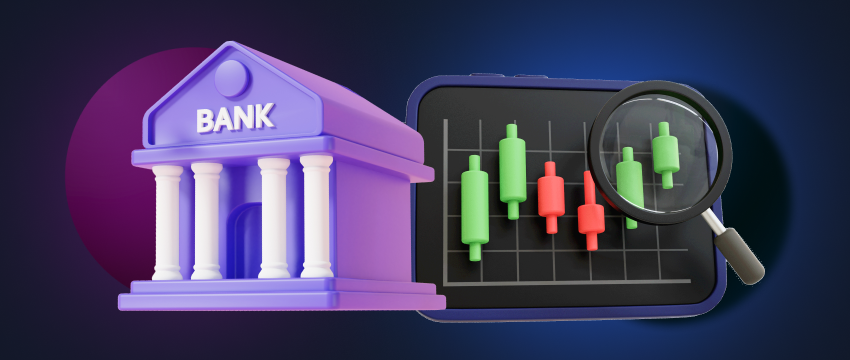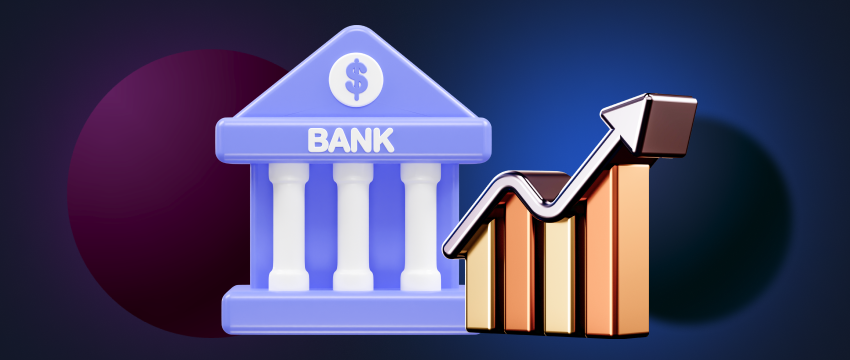Central banks worldwide play a very important role in maintaining stability and growth in financial markets. A central bank is typically the primary monetary authority in a country. However, its responsibilities extend far beyond the regulation of the financial sector. Rather, they are responsible for setting monetary policy, managing the country’s currency, and regulating the money supply. In this blog post, we’ll explore the crucial role central banks play in financial markets worldwide and the mechanisms they employ to influence economic conditions.
Implementing monetary policy
One of the main functions of central banks is to design and implement monetary policy. This includes establishing macroeconomic objectives like achieving price stability, sustainable economic growth, and stable employment rates. To do this, central banks will set interest rates, opting either to increase official rates (to control inflation) or decrease rates (to boost consumer spending or economic growth).
Regulation and supervision of financial institutions
Another primary responsibility of the central banks which involves setting and enforcing robust regulations to ensure the stability and integrity of the banking system. This function includes monitoring a bank’s liquidity (capital adequacy), risk management procedures, and compliance with regulatory obligations. Some of the key reasons for maintaining a strong regulatory framework of this kind are to reduce systemic risks, prevent excessive risk-taking by the banks, and safeguard the interests of depositors and investors.

Financial stability
Safeguarding a country’s financial stability is a critical mandate of central banks everywhere. They do this by implementing various indicators that monitor for potential systemic risks. The objective is to prevent a financial crisis or mitigate impact should a crisis arise.
Economic research and analysis
Arriving at policy decisions requires extensive economic research and analysis. Central banks do this by analysing financial data, economic indicators, and market trends to establish insights into the health of a country’s economy. This research also offers a way for central banks to get a better understanding of the factors that impact economic stability, identify emerging risks, and formulate dynamic policies to address them.
Lender of last resort
Central banks across the globe often act as a lender of last resort during times of financial crisis. When commercial banks are unable to meet their obligations due to liquidity shortages, the country’s central bank may step in to provide emergency funding to ensure the stability of the financial system. The goal of this function is typically to prevent bank runs or panic among the country’s general population.
Currency control
Central banks are responsible for managing a country’s currency, controlling the supply of money in circulation to keep the economy healthy and growing. The methods they use to do this vary from bank to bank, country to country. Some of the ways include careful control over how much money is printed, setting reserve requirements, influencing interest rates, engaging in open market operations, and instituting programs of quantitative easing.

Exchange rates
While most currency exchange rates are set on the forex market, governments may take certain measures to influence a country’s exchange rate against other foreign currencies to maintain competitive conditions and promote economic stability. In the U.S. for instance, the Federal Reserve Bank may step in by raising or lowering the Fed funds rate (the rate that banks charge when lending to each other), thereby indirectly impacting exchange rates.
6 of the world’s most notable central banks
U.S. Federal Reserve Bank
The U.S. Federal Reserve is probably the world’s most powerful central bank. This central banking system controls interest rates in one of the world’s largest economies and influences the U.S. dollar which accounts for almost 90% of the world’s currency transactions. As of May 2023, its total assets are said to be valued at approximately $8.5 trillion.
Bank of Japan (BoJ)
In operation since 1882, the BoJ’s top focus is inflation. Meeting 8 times a year, the bank seeks to ensure the stability of prices and the financial system. The BoJ expresses vocal concern about extreme currency fluctuations and has an active interest in preventing an excessively strong currency because of its considerable dependence on exports. At the end of September 2022, the BoJ’s total assets were valued at just over 684 trillion yen (almost $5 trillion).

European Central Bank (ECB)
Established in 1999, the European Central Bank consists of 6 members of the ECB executive board and governors of the national central banks from 19 eurozone countries. The ECB’s primary objectives are to maintain price stability and ensure sustainable growth. In contrast to the U.S. Federal Reserve, the ECB attempts to keep the annual growth in consumer prices under 2%.
Bank of England (BoE)
A publicly owned financial institution, the BoE is reportedly also considered one of the most effective central banks globally. Its main focus is to maintain stable monetary and financial systems in England by maintaining an inflation target of 2%. The security of its currency, a risk-free financial system, and the stability of its financial institutions are also core objectives of the BoE. Total assets of the Bank of England in 2021 were valued at more than $1.5 trillion, a massive leap up from $65.5 billion in 2002.
Swiss National Bank (SNB)
The Swiss National Bank oversees Switzerland’s monetary policy. The SNB is an independent bank with two offices, one in Zurich, the other in Berne. Like the Bank of Japan, the SNB seeks to avoid in having too strong a currency because of the country’s dependence on exports. As with many of the world’s central banks, the Swiss National Bank is responsible for maintaining price stability and overseeing the country’s economic health. In contrast to other central banks, however, the SNB sets an interest rate band instead of a particular interest rate target.
Bank of Canada (BOC)
The Bank of Canada is primarily responsible for overseeing Canada’s economic and financial systems to ensure stability. It does this by setting monetary policies, controlling the value and supply of the Canadian dollar, and managing public debt. The BOC has a 1%-3% inflation target and has generally kept within this range since 1998. Its governing council meets 8 times per year.
AVISO LEGAL: A informação disposta não deve ser interpretada como consultoria financeira ou recomendação de investimento, sendo apresentada apenas para fins de comunicação e marketing.




